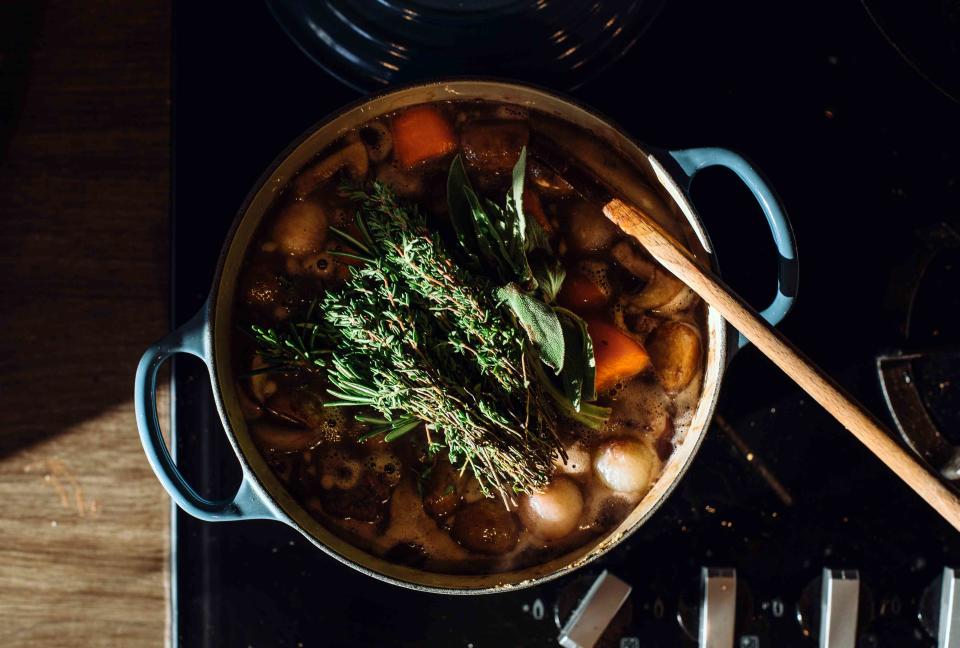Why You Should Never Put Hot Soup or Stock in the Fridge
Avoid the dreaded danger zone with tips for storing soup and stock safely in the fridge or freezer.

Alex Walker / Getty Images
It’s Sunday, and you’ve made a big batch of soup for the week. First of all, congratulate yourself for thinking ahead. You might be tempted to transfer the pot directly to the fridge and call it a night — but wait! By placing steaming-hot soup in a cold environment, you’re lowering the temperature of your fridge, and could even be bringing it into the dreaded “danger zone.” That doesn’t mean you should let the pot sit on your stove indefinitely, though. Here’s how to store soup and stock for safe and delicious results.
Related: Stock vs. Broth: What’s the Difference?
What is the danger zone?
According to the U.S. Department of Agriculture (USDA), the danger zone is any temperature between 40°F and 140°F, at which point perishable food can start to spoil. Refrigerators should register 40°F or below, so adding hot soup or stock with a significantly higher temperature can cause the overall temperature to rise, creating a breeding ground for spoilage. The USDA also does not recommend leaving hot or cold food out at a temperature within the danger zone for over two hours.
How to store soup and stock safely in the fridge
Allow the soup or stock to cool to room temperature, and aim to store it in the fridge within two hours per USDA guidelines. To cool it down quickly, you can use ice paddles — a common restaurant tool made with food-safe plastic — or place the pot in an ice water bath in the sink. Otherwise, remove the soup or stock from the hot pot and transfer it into shallow containers in small portions to lower the temperature more quickly. Soup and homemade stock will last in the fridge for about three to four days.
Related: 30 Chicken Soup Recipes That Are Pure Comfort in a Bowl
How to freeze soup and stock
Freezing soup and stock is a great way to preserve their flavor; and freezing homemade stock means you can make flavorful stock-based soups at any time. Brothy soups are generally the best candidates for freezing while creamier soups like chowders and bisques can take on an unpleasant grainy texture from the ice once thawed; you’ll also want to separate pasta and grains from the broth since they can absorb water. Aim to freeze soup or stock within three days of making it, and ideally within one day. If you’re freezing the soup the same day, first allow it to cool, and store it within two hours; otherwise you can transfer it to the freezer from the fridge.
Separate the soup or stock into shallow airtight containers, making sure to keep at least a half an inch of space at the top of the container for the liquid to expand. Even better, ladle into stackable ziplock bags, pressing out any air and leaving a little space at the top. Heat-resistant silicone ice cubes like Souper Cubes are another great option, and allow you to freeze individual ½-cup, 1-cup, or 2-cup portions. You can reheat directly from the freezer in the microwave or a saucepan over low heat to prevent it from burning. Soup and stock can be kept in the freezer for three to four months.
For more Food & Wine news, make sure to sign up for our newsletter!
Read the original article on Food & Wine.


